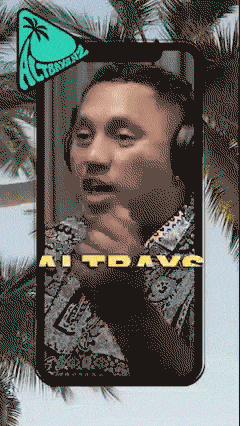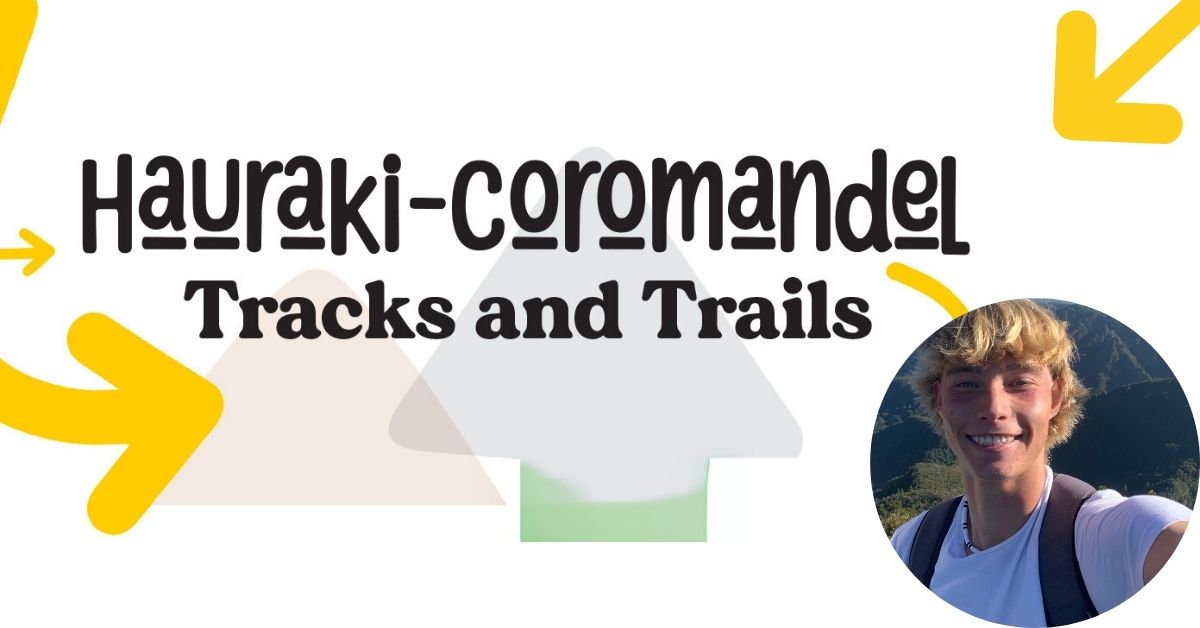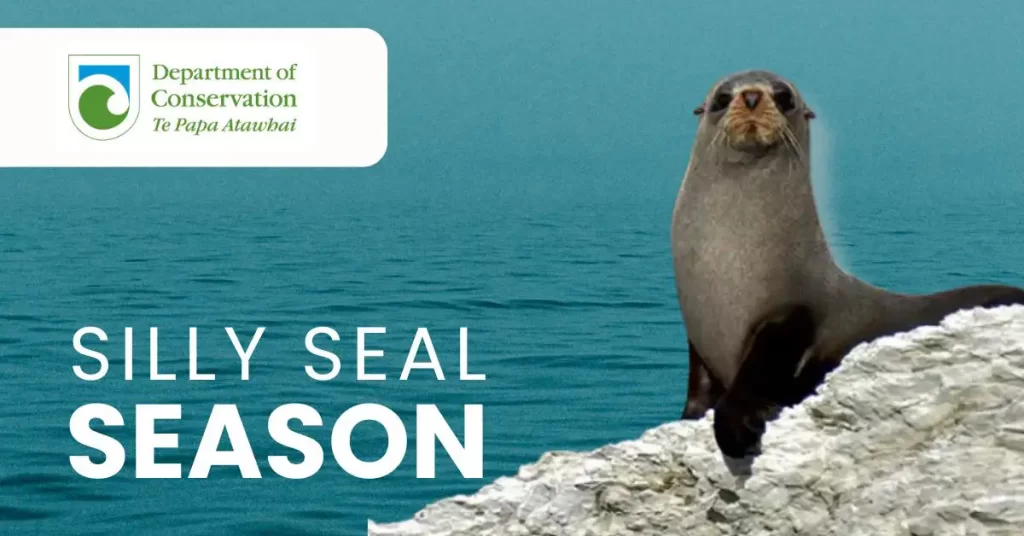
As the water temperature cools down over winter, you may notice New Zealand fur seals, or kekeno, returning to the rocky shores around the Coromandel Peninsula.
Between May and September, juvenile and male seals leave their breeding colonies to explore and rest. Department of Conservation (DOC) Marine Ranger James Blackmore says during this time, seals spend more time out of the water.
“They bask on rocky coastlines and beaches,” James says. “When they’re ready, they’ll head out to sea again in search of food.”
Fur seal breeding colonies are mainly on the South Island’s west coast, Stewart Island / Rakiura, and the subantarctic islands, but they also range as far north as the Coromandel Peninsula. However, these curious creatures don’t just stick to the coast — they often end up exploring and resting in some rather unusual places.
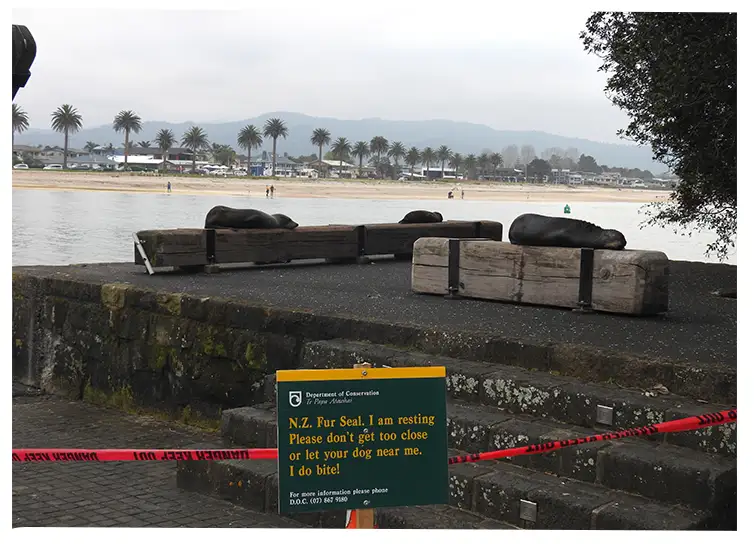
NZ fur seals / kekeno resting on the Ferry Landing Wharf in Mercury Bay.
“We’ve been called to a seal napping outside a takeaway shop in Whitianga, probably waiting for its fish and chips! They often nap on the wharf in Ferry Landing. We’ve also had reports of seals turning up in people’s boats in the marina, and even in their backyards,” says James.
It’s not uncommon to see seals traveling up rivers, sometimes venturing far from the coast.
Last September, Hauraki DOC rangers were called to relocate a seal which made itself comfortable at Paeroa College, having swum up the Firth of Thames and the Ohinemuri River to the school’s campus – about 20 km inland.
In 2021, a seal pup reached State Highway 25a near Prescott’s Garage in Hikuai, 11 km inland via the Tairua River. That same year, a young male seal took an unexpected journey to Middle Earth – travelling 90 km inland up the Waitoa River to a lake at the Hobbiton movie set.
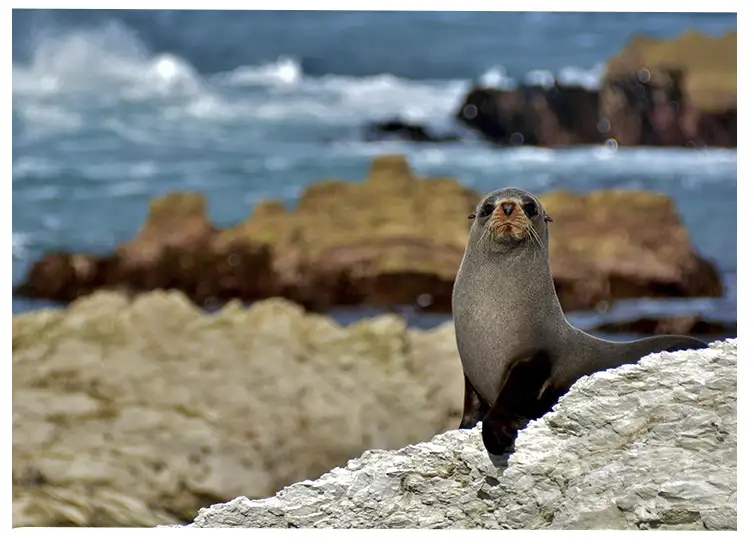
DOC receives numerous calls during winter about seals that appear sick or in need of help. People often worry because seal pups can look distressed, scrawny, or display behaviours like coughing, sneezing, or crying. Pups spend time alone while their mothers forage at sea, which can be mistaken for abandonment.
However, these are all typical behaviours for seals and usually don’t indicate a need for human intervention.
“Seals are resilient marine mammals and given time and space, usually find their way home,” James says.
Although it’s exciting to see seal pups in Hauraki-Coromandel, it’s important to remember they are wild animals and should be respected.
“They may look helpless, but seals will defend themselves if threatened. They can give a serious bite, so it’s best to give them plenty of space,” warns James.
If you come across NZ fur seals/kekeno, remember:
- Stay at least 20 m away from seals.
- Keep dogs and children away.
- Do not feed or disturb seals.
- Their behaviours like regurgitating, sneezing, coughing, or crying are normal.
- DOC follows a ‘hands off’ approach, and rangers will only intervene if a seal is in obvious danger. If you see a seal seriously injured, entangled in debris, on a public road, or being harassed, please call the 24/7 DOC Hotline 0800 DOC HOT (0800 362 468).
- Under the Marine Mammals Protection Act 1978, it is an offence to disturb, harass, harm, injure, or kill a seal. Dog owners whose dog/s attack seals could face prosecution.
Photo credit Shellie Evans
Follow DOC Hauraki-Coromandel on Facebook here.
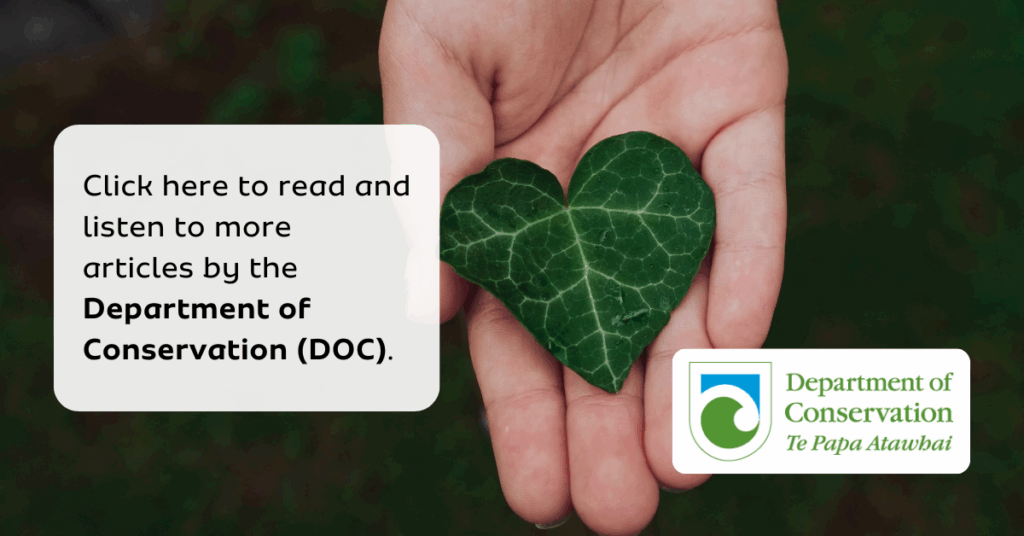
Coromind: Coromandel’s Collaborative Magazine

Help us take Coromind Magazine to new heights by becoming a member. Click here
Change the Weather for Your Business: Advertise with Us.
Advertise your business in the whole Hauraki Coromandel in the coolest Coromandel Art Magazine, from Waihi Beach/Paeroa /Thames up to the Great Barrier Island.
Advertise Smarter, Not Harder: Get in Touch


